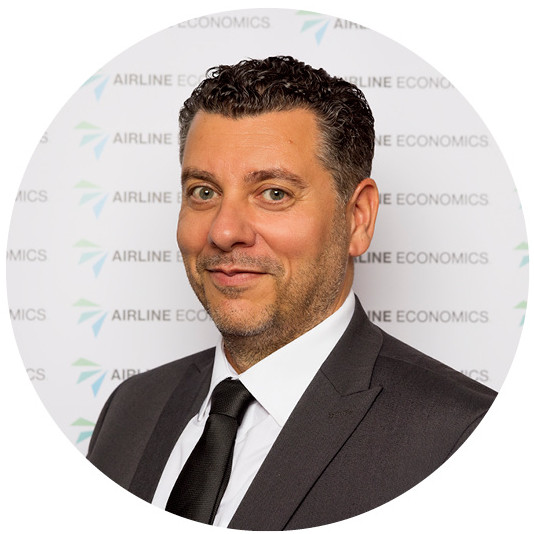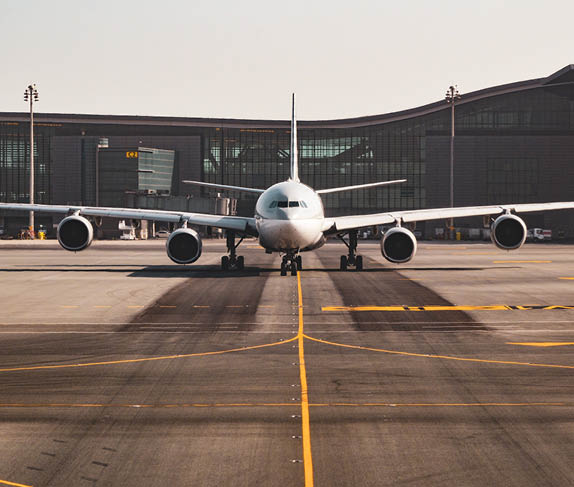Emirates Group has recorded its second highest profit ever with AED5.5 billion (US$1.5 billion) up 34% for the financial year ending 31 March 2015, with revenue of AED10.3 billion (US$2.8 billion), an increase of 10% over last year’s results.
Emirates Airline made a profit of AED4.6 billion (US$1.2 billion) with revenue up by 7% to AED88.8 billion (US$24.2 billion).
Dnata makes profit of AED 906 million (US$ 247 million), its highest-ever in 56 years “2014-15 was a turbulent year for aviation. The fall in oil prices provided cost relief in the second half of our financial year, however it did not offset the hit to our profitability caused by significant currency fluctuations, nor the hit to our revenue from operational adjustments in addressing the Ebola outbreak, armed conflicts in several regions, and the 80-day runway upgrading works at Dubai International airport (DXB). Achieving our 27th consecutive year of profit and one of our best performances to date, is testimony to the strength of our brands and business fundamentals, as well as the dedication and talent of our workforce,” said His Highness (H.H.) Sheikh Ahmed bin Saeed Al Maktoum, Chairman and Chief Executive, Emirates Airline and Group.
The strong rise of the US dollar against currencies in many of Emirates’ and dnata’s key markets had an AED 1.5 billion (US$ 412 million) impact to the Group’s bottom line, while the 80-day disruption at DXB had an estimated impact of AED 1.7 billion (US$ 467 million) on Group revenue.
“Every year brings a new set of challenges. In addressing these, we are always guided by the best interest of our people, our customers, and our long-term goals. As a Group, we keep a close eye on our top and bottom lines, but we never take our foot off the gas pedal when it comes to investing to enhance our business performance, and looking after our people. In 2014-15, the Group collectively invested over AED 20.2 billion (US$ 5.5 billion) in new aircraft and equipment, modern facilities, the latest technologies, and staff initiatives. This was the second highest amount ever in one financial year after last year’s record investment.”
“Looking ahead, the ongoing uncertainty for many currencies and economic markets around the world will continue to pose a challenge, as will the looming threat of protectionism in some countries. However, we move into the new financial year with confidence, and a strong foundation for continued profitability with our strong balance sheet, solid track record, diverse global portfolio, and international talent pool,” said Sheikh Ahmed. “We will continue on our journey of steady and rational growth, and work even harder to meet and exceed our customers’ expectations.”
In line with the overall profit increase, the Group declared a dividend of AED 2.6 billion (US$ 700 million) to the Investment Corporation of Dubai.
In 2014-15, Emirates increased capacity by 4.0 billion Available Tonne Kilometres (ATKMs). For the first time in the airline’s history, Emirates’ total passenger and cargo capacity crossed the 50 billion mark, to 50.8 billion ATKMs at the end of the financial year, cementing its position as the world’s largest international airline.
Emirates received 24 new aircraft during the year, including 12 A380s, ten Boeing 777-300ERs and two Boeing 777Fs, bringing its total fleet count to 231. At the same time 10 aircraft were phased out, taking the average fleet age to 75 months or approximately half the industry average of 140 months.
The 80-day runway closure at DXB necessitated the grounding of 19 Emirates aircraft, reducing the airline’s capacity by 9%, and causing the reduction of services to 41 destinations over this period. The estimated impact on airline revenue was AED 1.6 billion (US$ 436 million). The Ebola outbreak in Africa prompted route suspensions and increased health and safety screenings at other ports; and geopolitics resulted in the suspension of services and re-routing of flight paths to avoid overflying conflict zones.
Despite these challenges, Emirates revenue reached a new record of AED 88.8 billion (US$ 24.2 billion). The average price of jet fuel dropped significantly during the second half of the financial year and has supported Emirates’ bottom line improvement.
Emirates’ fuel bill decreased by 7% over last year to AED 28.7 billion (US$ 7.8 billion). Fuel is now 35% of operating costs, down by 4%pts compared to last year. However, fuel remained the biggest cost component for the airline. Total operating costs increased by 6%, compared to a revenue increase of 7% over the 2013-14 financial year.
The airline successfully managed increased competitive pressure across all markets to record a profit of AED 4.6 billion (US$ 1.2 billion), an increase of 40% over last year’s results, and a healthy profit margin of 5.1%, the strongest margin since 2010-11.
Carrying a record 49.3 million passengers, up 11% from last year, Emirates managed to achieve a Passenger Seat Factor of 79.6%, an improvement compared with last year’s results (79.4%) in spite of a 9% increase in seat capacity byAvailable Seat Kilometres (ASKMs). This highlights thestrong consumer desire to fly on Emirates’ state-of-the-art aircraft, and via efficient routings through its Dubai hub.
Under pressure from the weakening of all major currencies against the USD, passenger yield dropped to 29.7 fils (8.1 US cents) per Revenue Passenger Kilometre (RPKM).
To fund its fleet growth, Emirates raised a total of AED 18.7 billion (US$ 5.1 billion), using a variety of financing structures. Emirates achieved a major landmark when it closed the first ever Japanese Operating Lease on an A380. It also entered into a Japanese Operating Lease with a Call Option (JOLCO) with respect to one A380-800 aircraft to expand the investor base of the A380 into the Japanese market. During the year, Emirates also successfully closed sale and leaseback transactions for five B777-300ERs and one B777-200ER aircraft.
The financing highlight of the year was the successful issuance of a UK Export Finance (UKEF) guaranteed Sukuk bond of AED 3.4 billion (US$ 913 million) to fund the acquisition of four A380 aircraft to be delivered in 2015. This deal marked the world’s first Sukuk financing supported by UKEF and the largest ever capital markets offering in the aviation space with an Export Credit Agency guarantee. See Airline Economics Issue 25 for full details of this deal.
Revenue generated from across Emirates’ six regions are well balanced, with no region contributing more than 30% of overall revenues. Europe is the highest revenue contributing region with AED 25.2 billion (US$ 6.9 billion), up 7% from 2013-14. East Asia and Australasia follows closely with an increase of 3% and AED 24.6 billion (US$ 6.7 billion). The highest growth with 20% was recorded for the Americas to AED 11.0 billion (US$ 3.0 billion). Gulf and Middle East revenue increased 4% to AED 8.6 billion (US$ 2.3 billion).
Across the rest of the globe Emirates saw strong revenue increases from West Asia and Indian Ocean up 11% to AED 9.2 billion (US$ 2.5 billion) and Africa with AED 8.1 billion (US$ 2.2 billion) in revenue, up 5%.
The 2014-15 financial year has been a strong one for Emirates SkyCargo who reported a revenue of AED 12.3 billion (US$ 3.4 billion), a 9% increase over last year. Emirates SkyCargo contributes 15% of the airline’s total transport revenue. Emirates SkyCargo’s tonnage strongly increased by 6% to reach 2.4 million tonnes in a challenging airfreight market. This year, freight yield per Freight Tonne Kilometre (FTKM) decreased by 1%, and was also impacted by the weakening of major currencies.
At the end of the financial year, the Emirates SkyCargo freighter fleet had grown to 14 aircraft - 12 Boeing 777Fs, and 2 Boeing 747-400Fs.
Emirates’ hotels recorded revenue of AED 693 million (US$ 189 million), an impressive increase of 23% over last year. This positive development was supported by the opening of the second tower of the JW Marriott Marquis Hotel in Dubai, the world’s tallest hotel.
In its 56 years of operation, 2014-15 has been dnata’s most profitable yet, building on its strong results in the previous year. dnata's revenue grew to AED 10.3 billion (US$ 2.8 billion), crossing AED 10 billion for the first time. dnata’s international business now accounts for more than 60% of its revenue.

